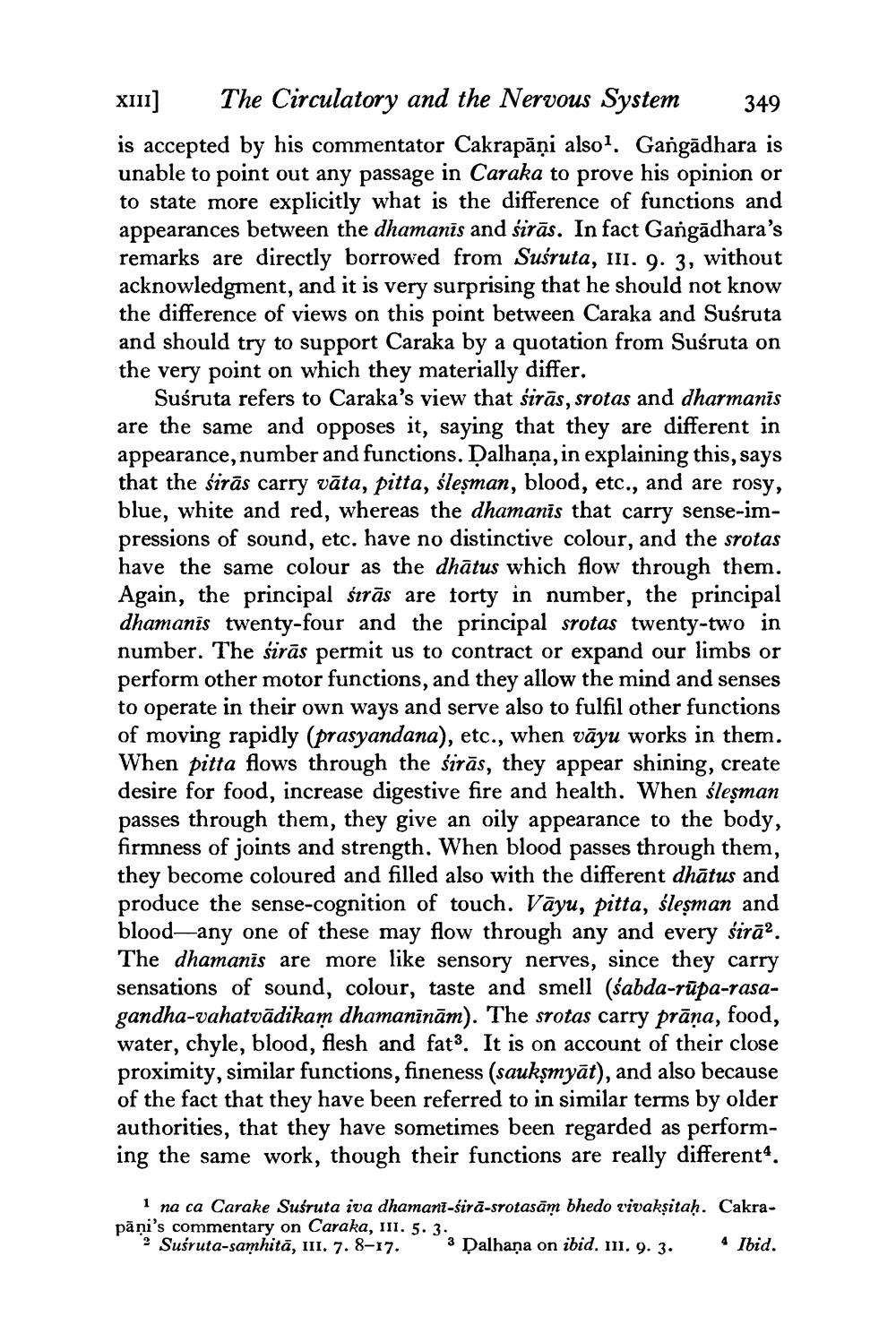________________
X11] The Circulatory and the Nervous System 349 is accepted by his commentator Cakrapāņi also?. Gangādhara is unable to point out any passage in Caraka to prove his opinion or to state more explicitly what is the difference of functions and appearances between the dhamanīs and sirās. In fact Gangādhara's remarks are directly borrowed from Sušruta, III. 9. 3, without acknowledgment, and it is very surprising that he should not know the difference of views on this point between Caraka and Suśruta and should try to support Caraka by a quotation from Suśruta on the very point on which they materially differ.
Susruta refers to Caraka's view that śirās, srotas and dharmanis are the same and opposes it, saying that they are different in appearance, number and functions. Dalhaņa, in explaining this, says that the sirās carry vāta, pitta, śleşman, blood, etc., and are rosy, blue, white and red, whereas the dhamanis that carry sense-impressions of sound, etc. have no distinctive colour, and the srotas have the same colour as the dhātus which flow through them. Again, the principal śırās are forty in number, the principal dhamanis twenty-four and the principal srotas twenty-two in number. The sirās permit us to contract or expand our limbs or perform other motor functions, and they allow the mind and senses to operate in their own ways and serve also to fulfil other functions of moving rapidly (prasyandana), etc., when vāyu works in them. When pitta flows through the firās, they appear shining, create desire for food, increase digestive fire and health. When śleşman passes through them, they give an oily appearance to the body, firmness of joints and strength. When blood passes through them, they become coloured and filled also with the different dhātus and produce the sense-cognition of touch. Vāyu, pitta, śleşman and blood—any one of these may flow through any and every sirā. The dhamanis are more like sensory nerves, since they carry sensations of sound, colour, taste and smell (sabda-rūpa-rasagandha-vahatvādikam dhamanīnām). The srotas carry prāņa, food, water, chyle, blood, flesh and fats. It is on account of their close proximity, similar functions, fineness (sauksmyāt), and also because of the fact that they have been referred to in similar terms by older authorities, that they have sometimes been regarded as performing the same work, though their functions are really different4.
1 na ca Carake Suśruta iva dhamani-sirā-srotasām bhedo vivaksitaḥ. Cakrapāņi's commentary on Caraka, III. 5. 3.
Susruta-samhitā, 111. 7. 8-17. 3 Dalhaņa on ibid. m. 9. 3. Ibid.




